Listed 100 (total found 112) sub titles with search on: Main pages for wider area of: "CRETE Island GREECE" .
ACHLADA (Village) GAZI
Tel: +30 2810 811255
The Municipal District of Ahlada is 23 km away from Heraklion.
It is a mountainous area at an average altitude of 189m. The settlement of Ahlada
which is situated on top of the hill that dominates Agia Pelagia, is a model of
a farming settlement. In spite of an interesting old part and the astonishing
view, a shift of the productive activity of the inhabitants towards the coastline
of the Municipal District has been noted.
Τhe entire area is characterized by smooth hills where olive groves
are dominant while at the bays of Agia
Pelagia and Lygaria
there are sandy beaches for swimming and tourism activities are dominant. The
sea and the morphology of the ground on the hills are deemed to be the most significant
factors of the district, which has resulted in the upgrading of the tourist product
provided. Agia Pelagia, Lygaria, Palaiokastro
are deemed to be amongst the most beautiful tourist areas of our Municipality
which attracts thousands of tourists, Greeks and foreigners every summer and they
have been developed into resort centers.

ADELE (Village) ARKADI
Tel: +30 28313 41011, 41030, 41023
Fax: +30 28313 72125
AGIA PELAGIA (Port) HERAKLIO
The entire area is characterized by smooth hills where olive groves are dominant while at the bays of Agia Pelagia and Lygaria there are sandy beaches for swimming and tourism activities are dominant. The sea and the morphology of the ground on the hills are deemed to be the most significant factors of the district, which has resulted in the upgrading of the tourist product provided. Agia Pelagia, Lygaria, Palaiokastro are deemed to be amongst the most beautiful tourist areas of our Municipality which attracts thousands of tourists, Greeks and foreigners every summer and they have been developed into resort centers.
This extract is cited Oct 2002 from the Municipality of Gazi URL below, which contains images.

AGIA TRIADA (Village) LEFKI
Tel: +30 28430 91498
AGIOS GEORGIOS (Village) SITIA
Tel: +30 28430 26044
AGIOS IOANNIS (Village) IERAPETRA
Tel: +30 28420 61607
AGIOS SPYRIDON (Village) SITIA
Tel: +30 28430 26910
AMOUDARA (Beach) HERAKLIO
In Ammoudara you will see one of the most organized beaches of the County of Heraklion. A 5km sandy beach granted with a European blue flag distinction, is suitable for sports. In the summertime, it is most vibrant since it embraces thousands of tourists. You will find fabulous taverns with traditional dishes, coffee shops, bars and clubs for superb nightlife until the early hours.


ANALIPSI (Village) HERAKLIO
It’s an old settlement that has fast rate of tourist growth
the last years. The settlement is built near to the deep blue sea with beautiful
beaches, which many of them have been rewarded.
This text (extract) is cited February 2004 from the Municipality
of Chersonissos tourist pamphlet.
ANOGIA (Small town) RETHYMNO
The historic Anogia region lies in the north slopes of Psiloritis
Mountain, between two hills, at a height of 740 metres. As mythology has it,
it was here that Zeus was brought up. At the foot of the high peak, the cave of
Idaeon Antron was used as a worship site from Minoan through to Hellenistic and
Roman eras.
The hospitable highlanders who live in Anogia gave preserved their
manners and customs through the ages. The spoken variation of modern Greek still
includes a considerable number of words from the ancient Greek language, while
Anogia residents have made a name for themselves for their cheerfulness, dancing
and music, as well as for their folk Cretan couplets.
The wider region of Anogia is ideal for mountaineering, push-biking,
walking tours, naturalist tourism and skiing at the snow-ski centre. The area
is also rich in sights and visitors will have a highly interesting time not only
in admiring the flora and fauna, the many caves and precipices, but also in visiting
the Nidas plateau, the Vroulidia forest, Kampoi and the springs of Zomithos, Trigiodiou,
Varsamou etc. Other interesting sights one must visit in the area are the Byzantine
church of St. John, the Gryllios Woodcarving Museum, the Old Anogian Domicile,
the textile workshop, the Minoan settlement in Zomithos and many more.
In this unique area of exceptional natural beauty, visitors will become
acquainted with the authentic, genuine Cretan lifestyle on one of Greece’s
most scenic mountains.
The area is equipped with many tourist farm lodgings, while the numerous
tavernas, restaurants and endless good mood of the locals provide for a matchless
good time.
Anogia is only 35 km away from Heraclion
and 54 km from Rethymno.
This text is cited February 2004 from the Municipality
of Anogia tourist pamphlet.
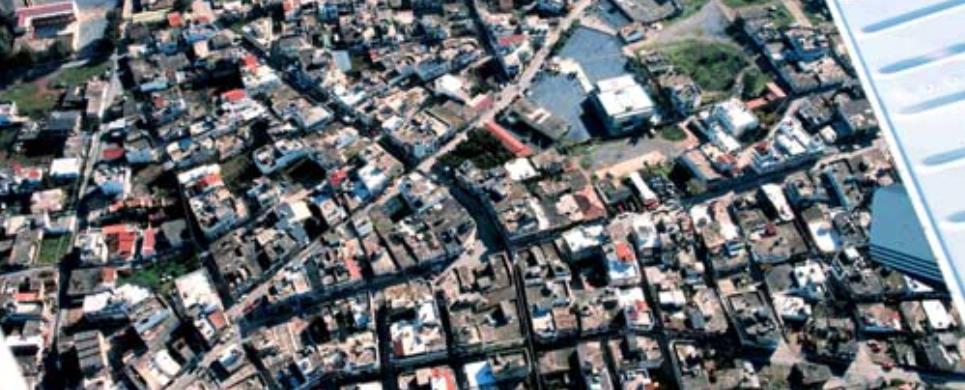
ARKALOCHORI (Small town) HERAKLIO
CHANIA (Prefecture) CRETE
The county of Chania, the most western part of Crete,
is characterized by its unique beauty. With its endless sandy beaches, gorges,
caves, endemic plants and animals, vast olive and orange groves and a combination
of wild landscapes and sea, it excites even the most hard-to-please visitors.
In the mountainous inner parts, it hosts villages that have been forgotten
by time, scattered churches and monasteries, towers and castles.
The whole area is a particularly interesting archaeological site and
simultaneously a paradise for wandering, mountain climbing and sports. The excavations,
both in the town of Hania and
in the country, have proven the existence of residences from prehistoric times
to today.
The mild Mediterranean climate with temperatures in winter around
12°C and in summer around 30°C, the special Cretan diet, the acquaintance with
customs that elsewhere tend to become forgotten and the whole-hearted hospitality
of the islanders, win over the visitor to this blessed place.
(Text: Dr. Anastasia Kalpaki-Georgoulaki)
This text is cited December 2003 from the Chania
Prefecture Tourism Committee tourist pamphlet (2002).
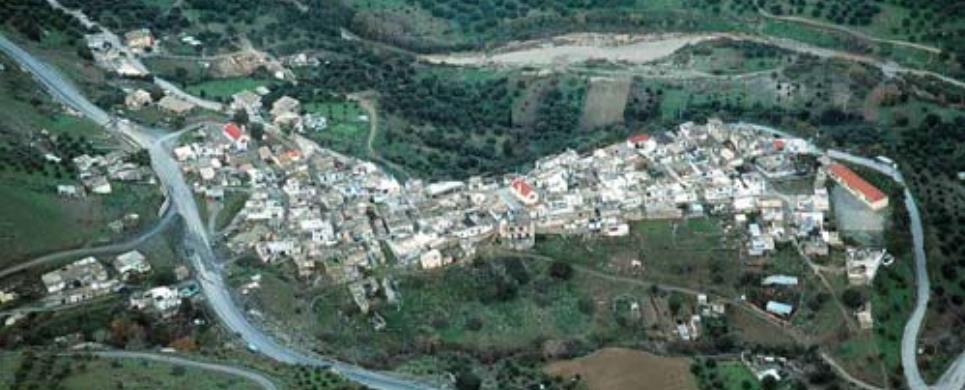
DEMATI (Village) ARKALOCHORI
Tel: +30 28910 71071
DOULIANA (Settlement) VAMOS
Douliana is a small community
in this district, situated on a hill with beautiful natural surroundings and interesting
architecture. This traditionally preserved community has maintained its character
more than any other community in the area. Many foreigners live permanently in
the village. The locals take a great interest in issues regarding the preservation
of the community.
This text is cited September 2004 from the Interkriti URL below, which contains images.
EXO LAKONIA (Village) AGIOS NIKOLAOS
Tel: +30 28410 25180
EXO POTAMI (Village) AGIOS NIKOLAOS
Tel: +30 28440 22554
FLAMOURIANA (Village) AGIOS NIKOLAOS
Tel: +30 28410 25140
FODELE (Village) GAZI
Tel: +30 2810 521233
Going to Fodele
At the 25th km of Heraklion
- Rethymno highway we
meet the junction for Fodele, having on our left, two of the three beaches of
the area that are separated by the mouth of Pandomandri's river. The river flows
by the road and after a 3 km drive through orange trees it reaches the village.
Fodele is a mountainous area at an altitude of 60m above sea level. Both the old
core of the settlement at the western slope of the small valley and the newer
at the banks of the small river compose a very interesting structured environment,
which in combination with the rich vegetation and the orange groves create a unique
landscape for central Crete.
Fodele Village
The village comprises an oasis of freshness, especially for the hot
days of summer. The village's square offers itself for relaxation and gives the
chance to visitors to enjoy their coffee or lunch next to the river underneath
the perennial plane trees. A bit further down the square, at Archontico settlement
there is Dominico Theotocopoulos Museum of Replicas, which is housed at the alleged
birth-place of the great painter. At the same settlement there is the small Byzantine
church of Panagia (Virgin Mary) (The presentation of the Virgin Mary), which is
said to be the motive of Greco to get involved with hagiography. This church is
built on the ruins of an older three-sectioned Byzantine church with wonderful
frescos and sculptures.
Except for the developed tourist beach and the huge hotel complex,
in Fodele settlement there have also developed remarkable activities in handicraft
sector and pop art trade together with the rendering of services of taverns and
restaurants. Significant is also the trade of local products, mainly oranges.
An area of outstanding natural beauty is the surroundings of Dominico
Theotocopoulos' house and the Byzantine church in Loumbinies. At a similar area
there is Galini area where there is a creek bearing waters until July, verdant
with plane trees, which empties into a natural port of unique beauty - an area
with rare aesthetics value and many antiquities that could be declared as a national
park.
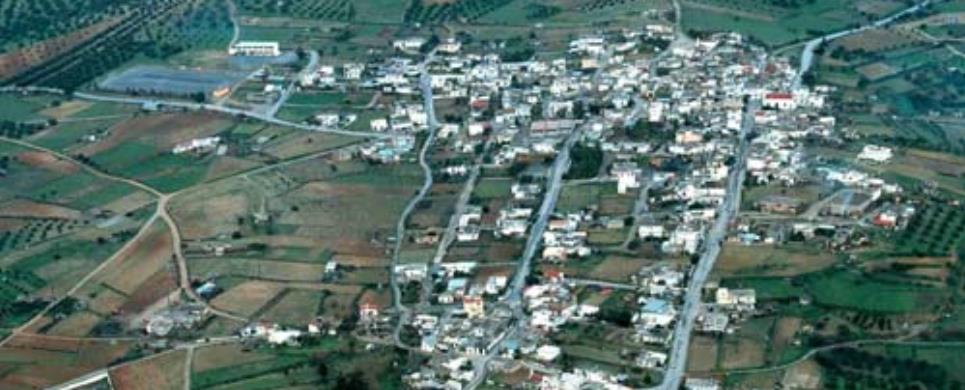
GARIPA (Village) ARKALOCHORI
Tel: +30 28910 93350
GAVALOCHORI (Village) VAMOS
Tel: +30 28250 22625
The small village Aspro (Koprana), built upon a hill, consists mainly
of buildings dating from the 18th century and is inhabited predominantly by foreigners.
Gavalohori is a large old village
with particularly interesting and well-preserved folk architecture. In this officially
protected, traditional village a lot of interesting buildings can be found, such
as the 18th century two-roomed, arched olive oil press, the temples of Panagia
and Agios Sergios, the old school and many residences.
Visitors can also find the unique folklore
museum of the prefecture of Hania, organised by the Ministry of Culture, filled
with a wealth of displays of folk life.
The landscape around the village still has its natural beauty. Plenty
of opportunities for walks are provided around the group of Venetian
wells, the Roman cemetery, the neighbourhood and the church of Agios Pavlos.
A women association continuing the old art of lace making (kopaneli) and dealing
generally with alternative tourism also exists in Gavalohori. Gavalohori could
offer environmental management training as well as other activities at the Environmental
Educational Centre, which is currently under construction.
GAZI (Small town) MALEVIZIO
Just 7km away from Heraklion on the right side of the bank of Gazanos river, as
the ancient Triton river is known. The area of Gazi has been inhabited since Minoan
times and nowadays hosts the Municipality's headquarters at a newly built Town
Hall situated at Platia Eleftherias. It is a resort with 12 settlements presenting
residential booming maintaining the same time its individual cultural interest.
GONIES (Village) CHERSONISSOS
Tel: +30 28970 51372
Historical and colourful village built at the foot of Lassithi Mountains,
with many natural resources, great canyons and what’s more the Ampelos gorge,
lovely caves with their rich natural decoration, oak trees and so much more. All
these consist enchanting scenery with bird’s eye view, the best for explorations
and peaceful walks.
This text (extract) is cited February 2004 from the Municipality
of Chersonissos tourist pamphlet.
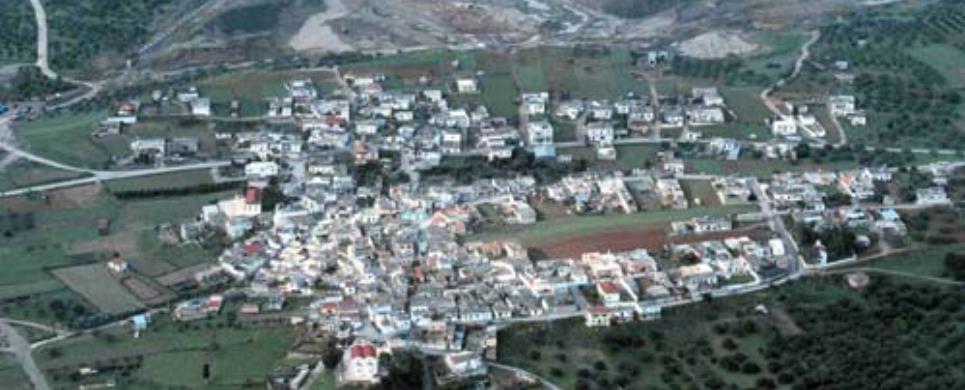
INI (Village) ARKALOCHORI
Tel: +30 28910 91432
KAINA (Village) VAMOS
Tel: +30 28250 22440
The southwest road from Vamos
leads through the well-preserved community of Tsikoliana to the interesting village
of Kaina, which has many buildings
dating from the years of the Turkish occupation. Outside the small community of
Genitsari Metohi or Platanos, one can find the church of Agios Antonios with its
frescoes from the 14th century, the beautiful location Sopoto and on the national
road the small church of Agios Fanourios
where many people come to worship and where interesting religious events take
place. From Kaina the national road provides a further route to the district of
Vamos and access to the mountainous area of Fre.
KALAMITSI ALEXANDROU (Village) VAMOS
Tel: +30 28250 22551
The small community of Kalamitsi Alexandrou is situated 8 km away from Vamos.
It is an old and well-preserved village with narrow streets, the large, modern,
cross-shaped and domed church of Agia Triada and impressively constructed underground
reservoir "Softas" dating from the Turkish occupation.
KALESSIA (Village) GAZI
It is a small, picturesque village with a traditional settlement of
stone built houses, on a hill. It brings back past times of 1900 with the old
quarter and the narrow allies that give a sense of tranquility and simplicity.
The traditional coffee shops serve tsikoudia (local strong alcoholic drink) and
Cretan rusks with olives from the local production and wine made from the famous
grapes of Kalessa.
At the square of the village there is Evagelismos church (Annunciation
church), typical sample of the Venetian domination in Crete of 13th century. Another
significant church is Ai Yiorgi church (St. George church), stone built in basilica
manure, which dates back to 1300. The itinerary to Kalessa has been described
to be not only naturalistic but also historic due to the monuments of the area.
The route up to the village is passing through vineyards and olive groves, having
sea as background from the one side and mountains from the other. Kalessa is built
on a hill, the foot of which has many caves known since Minoan times that; were
later developed by the Venetians and were modified with chiseled arches.
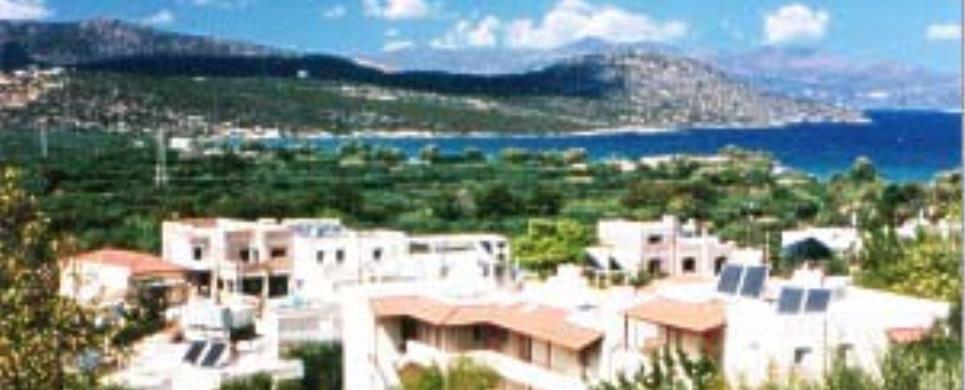
KALO CHORIO (Village) AGIOS NIKOLAOS
Tel: +30 28410 61501
Fax: +30 28410 61651
KARAVADOS (Village) ARKALOCHORI
KARYDI (Village) ITANOS
Tel: +30 28430 93472
It is the most beautiful of the highland villages of the Itanos
municipality, that keeps unchanged its picture and its face throughout the
years. It's about 15 kilometers away from Palaikastro and it has around 80 inhabitants.
In the area are very important archeological discoveries. Also near
Peristera there is the homonymous cave, one of the largest and most important
caves of Crete.
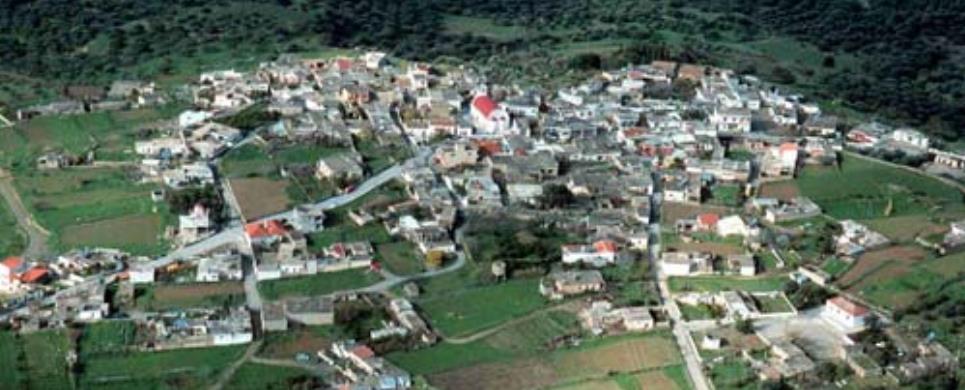
KASSANOS (Village) ARKALOCHORI
Tel: +30 28910 61434
KATO CHORIO (Village) IERAPETRA
Tel: +30 28420 31000

KATO KASTELLIANA (Village) ARKALOCHORI
Tel: +30 28910 71290
KAVROCHORI (Village) GAZI
Three (3) km after Gazi you will find Kavrochori settlement, which is popular for its vivid traditional character and picturesqueness. Narrow allies, old factories and stone built houses with 'ontas' and wooden staircase. It is worth mentioning the old olive press (Fabrika) of the village that is at least 200 years old.
KEFALAS (Village) VAMOS
Tel: +30 28250 22725
The community of Kefalas is situated approximately 4 km to the east
of Vamos. During
the Venetian occupation higher and lower Kefalas were classed as two separate
villages, however, today they have become one. It is a large village built in
an outstanding position facing the sea with architecture dominated by the influence
of the early and late years of the Turkish occupation. This influence is well
preserved despite the existence of other architectural styles.
The church of Timios Stavros (16th century) is the oldest building
of the village while the more recent churches of Panagia, Agios Antonios, and
Michael the archangel, works of the reputed Kefalas craftsmen, are examples of
folk architecture of the 19th century.
A further example of the work of the same craftsmen is the Public
School of Kefalas, which in accordance with the decision of the county council
of Hania will house the Environmental
Educational Centre of the prefecture, a foundation that will play a definitive
role in the development of the municipality of Vamos. Other interesting communities
are Paleloni and Drapanos in the
direction of Kokino Horio. The road from Paleloni leads to Embrosgialo, a relatively
easily accessible place, along the steep coastline, which extends to Georgioupoli.
KERA (Village) CHERSONISSOS
Tel: +30 28970 51497
It is consisted of two old settlements, which played a vital role
in the revolution of Christians the previous century. The settlements are surrounded
of streams and brooks, fruit-bearing and wild trees, offering visitors unique
short walks. The historical Monastery
of Panagia Kera "Kardiotissa" was the guarding entrance to the rich
valley of Lassithi in years
of Cretan Revolution.
This text (extract) is cited February 2004 from the Municipality
of Chersonissos tourist pamphlet.
KIMOURIOTIS (Settlement) SITIA

KOKINO CHORIO (Village) VAMOS
Kokino Horio, which
is located at a higher altitude, has maintained its traditional architectural
style even more so than the other villages with its narrow roads, beautiful gates
and tiled roofs.
A group of cisterns, built in a sloping field, gather the rainwater,
an interesting example of local architecture, dealing with the permanent problem
of lack of water. Above Kokino Horio one can see the strangely shaped hill Drapanokefala
or Calapodha (so named during the venetian occupation). The coastline northwest
of the village is an extremely interesting place for a stroll due to the ground
formation and the caves, such as the cave of Petsi (or Karavotopos). Another cave
called Katalimata, located at the centre of the village, is also an interesting
site.
At cape Drapano, approximately 10 metres under water, is the impressive
Elephant cave, an area 60mx60m
full of stalactites and stalagmites of various shapes and colours.
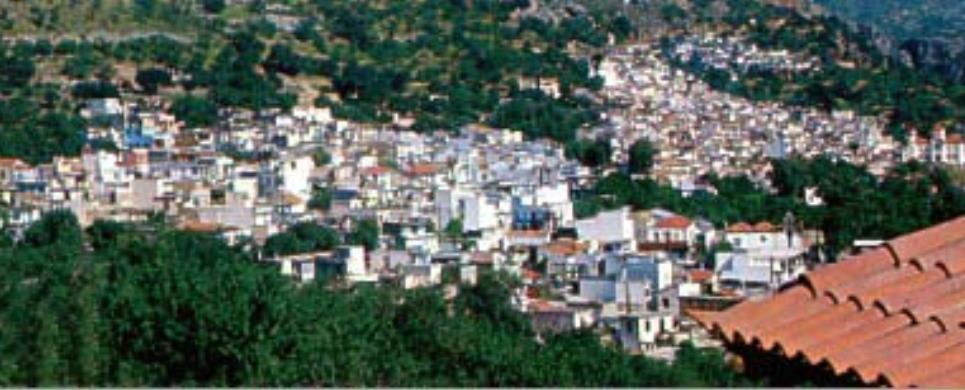
KRITSA (Small town) AGIOS NIKOLAOS
Tel: +30 28410 51780, 51205
Fax: +30 28410 51205
KROUSTAS (Village) AGIOS NIKOLAOS
Tel: +30 28410 51400
LAPPEI (Municipality) RETHYMNO
The Municipality of Lappaioi has a population of 2585 and it covers
51,132,000 sq.m. It is situated near the boundaries of the prefectures of Rethymno
and Chania and it stretches
from the beach of Episkopi
to the massif of Miriokefala
and Alona. It is only 10 km
from Rethymno, 40 km from
the city of Chania and a mere
75 km from the capital Heraklion.
This gives the area great advantages since the visitor has easy access, through
the newly constructed national road, to all Crete’s
centres.
Moreover through the road that crosses the Municipality, southern
Crete is in fast and easy reach.
It wouldn’t be an exaggeration to say that a tourist during a day-trip could
go as far as the palm forest of Vai on the eastern edge of Crete
and of course spend the night in his hotel at Lappa. The Municipality of Lappaioi
has some very beautiful villages, which are scattered to the hills and mountains
between the rivers Mouzela and Petre. Starting from the northern section of the
Municipality we find ourselves at Episkopi.
The area had been settled from the 1st Byzantine period (325-824) according to
the ruins of an early-Christian church temple, which was discovered in 1959 near
the spring Fountana.
To the south of Episkopi
and in a distance of 4 km is Argiroupoli
in the place of ancient Lappa.
Lappa was one of the greatest
cities of ancient Crete and
flourished in the Roman period, which is estimated from the extent of the remains
that it numbered around 10,000 inhabitants. Many houses of Argiroupoli
are created by building materials from ancient
Lappa.
Continuing our route to south, we reach the mountainous village, called
Miriokefala. The village is
known from the Monastery, which is situated here, in which an icon of Panaghia
of Byzantine technique has been preserved.
The Municipality has also some very beautiful and picturesque village
such as: Karoti, Archontiki,
Kato Poros, Vilanthretho,
Arolithi, Alones,
Roubatho and Maroulou,
to which the passage of the Venetians has left the markings of that era (such
as smoothly polished stones, the beautiful door frames and the doors themselves
with Latin inscriptions etc). The "dowry" however of the Municipality
of Lappaioi isn’t limited only to beautiful villages but it also includes
regions of exceptional natural beauty, historical and archeological monuments
and buildings, churches and traditional settlements.
This text (extract) is cited February 2004 from the Municipality
of Lappes tourist pamphlet.
LASSITHI (Prefecture) CRETE
The prefecture of Lassithi occupies the far-eastern part of the island
and it is divided into 8 municipalities: Aghios Nikolaos, Ierapetra, Sitia, Neapoli,
Makri Gialos, Lefki, Oropedio (Lassithi Plateau) and Itanos. It is embraced by
three seas: the Cretan Sea in the north, the Libyan Sea in the south, the Carpathian
Sea in the east, whilst in the west, the mountain range of Dikti prevails imposingly,
spreading its verdant mountainsides down to the plains of Mirabello and those
of Ierapetra, in a picturesque contrast. The land morphology all over the prefecture,
with the ever changing, highly contrasting landscape, as well as its unequaled
natural beauties, captures the visitor from the very first moment. Its coasts
present the same contrasts. Its mild, purely Mediterranean climate, without any
abrupt fluctuations, is considered to be one of the healthiest and most pleasant
climates, all year long. In the plains and on the mountain slopes the luxuriant
vegetation is present even during the summer, thanks to the olive- groves, whilst
during the spring the almond - trees demonstrate the white sorcery of their blossoms
everywhere. Moreover, the land fertility, combined with the favourable climatic
conditions, is a guarantee for the self- sufficiency of the prefecture, as far
as the agricultural, farming and garden products are concerned, products which
are renowned for their highest quality and taste. Olive oil, almonds, carobs and
particularly the high quality raisin produced in Sitia, are exporting products.
No other prefecture of Crete shows such a particularity as Lassithi.
The primary factor of such a particularity is the existence of so many regions
which combine natural beauty with historical and archaeological interest. We say
"no other prefecture", because the triptych of interests in this prefecture is
really unparalleled. Regions as the palm - forest of Vai or the plateau of Lassithi
are unique in Greece. As far as archaeology is concerned, the prefecture is spread
with ruins of ancient towns, settlements and buildings, on the other hand the
existence of Zakros palace, as well as the ancient town of Gournies, turn the
area into a place of high interest for the researchers of the minoan era. Nevertheless,
from an historical point of view, Lassithi is of high interest, too, not only
because it sheltered Eteokrites (one of the five ancient Cretan tribes, cited
by Homer), or because Itanos played an important part in the history of Hellenistic
times, but also because it was the scenery of bloodshed between Greeks and Turks,
during the Turkism Domination.
The visitor of Lassithi can organise his or her tour and easily explore
the neighbouring area, using any town of the prefecture as starting point. Agios
Nikolaos is the picturesque capital of Lassithi, so it is the centre of many starting
points for the public buses' destinations. Nevertheless, the visitor who has more
time at his or her disposal and would like to be acquainted with Lassithi, should
explore various destinations, using Agios Nikolaos, Neapoli, Ierapetra, and Sitia
as starting points.
This text is cited Oct 2002 from the Prefecture of Lassithi URL below, which contains images.
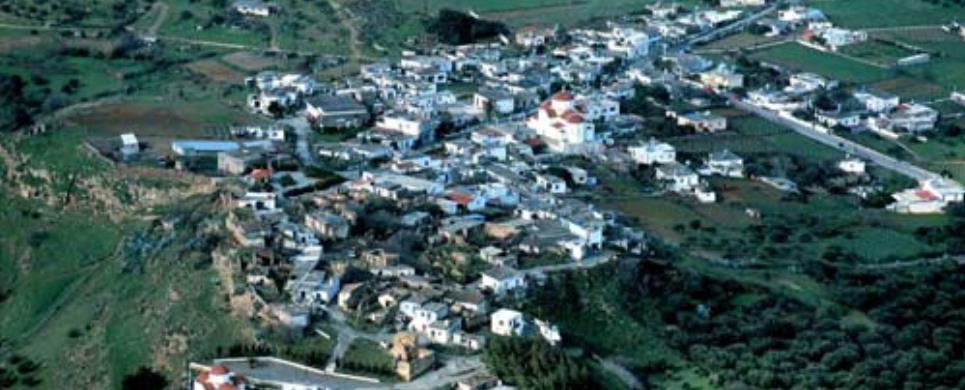
LEFKOCHORI (Village) ARKALOCHORI
Tel: +30 28910 22529
LIMNES (Village) AGIOS NIKOLAOS
Tel: +30 28410 32810
MESSA MOULIANA (Village) SITIA
Tel: +30 28430 95212
MONH GONIAS (Monastery) KOLYMBARI
Tel: +30 28240 22281
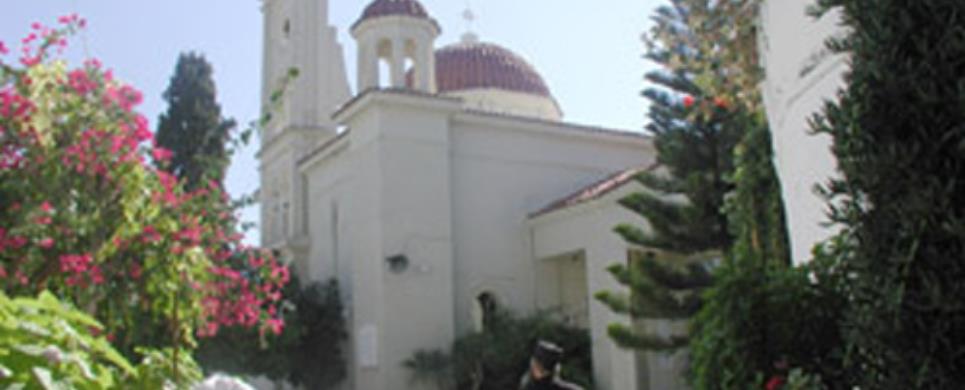
MONI AGARATHOU (Monastery) THRAPSANO
Tel: +30 2810 771218, 771621, 771874

MONI AGIOU GEORGIOU EPANOSSIFI (Monastery) NIKOS KAZANTZAKIS
Tel: +30 2810 51231, 51093
MONI AGIOU IOANOU TOU THEOLOGOU (Monastery) GOUVES
Tel: +30 2810 781349
The monastery
is located in a small distance south east of Anopolis
in a tree covered valley. It was first a part of the Saint George monastery located
by the mouth of Aposelemis river a few kilometers to the north, but around 15th
- 16th century the monks due to the raids of the pirates moved from Saint George’s
monastery to the monastery of Saint John taking with them the icon of the Saint
which exists until today.
During the Turkish occupation a "secret school" has been operating
at the monastery which was also a base of the rebellions against the invaders.
The monks of the monastery and the people of Anopolis
paid for their activities when in July 1896 the Turks slaughtered them and ruined
the monastery. A cross stands at the top of the overlooking hill to remind this
massacre.
The monastery was refounded by Kalinikos Daskalakis (1904 - 1936).
MONI AGIOU PANTELEIMONOS (Monastery) GAZI
Tel: +30 2810 521266, 521281
It is almost a 5 km drive along the river through orange and plane trees. Built
in the last period of the Venetian occupation, it is in complete harmony with
the verdant scenery/landscape. During the Turkish occupation, the monastery constituted
the center of the revolutionary action and even though it was severely damaged
and pillaged it preserved its traditional architecture of a monastery.
MONI ARETIOU (Monastery) NEAPOLI
This fifteenth century monastery was one of the most important in
the province during the Turkish occupation. Due to its location in a dry, isolated
area it was not bothered by the Turks. There are workshops for producing wine
and olive oil as well as the monks cells and the beautiful church. The monastery
became the most prosperous one of Mirabelo, managing to buy seven other monasteries.
Today it is being extensively restored.
This extract is cited Feb 2003 from the Crete TOURnet URL below, which contains images.






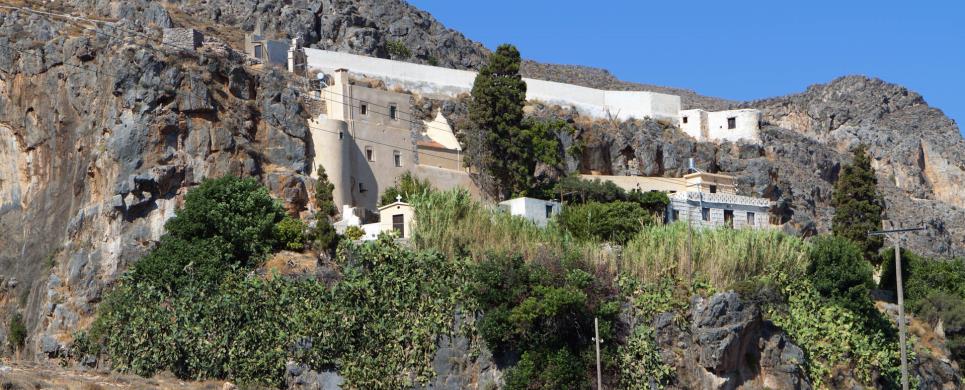
MONI KAPSA (Monastery) MAKRYS GIALOS
Tel: +30 28430 51458
Fax: +30 28430 51458

MONI ODIGITRIAS (Monastery) MIRES
Tel: +30 28920 42364
MONI PALIANIS (Monastery) PALIANI
Tel: +30 2810 791331
MONI SAVATHIANON (Monastery) GAZI
Tel: +30 2810 841296, 220579
It is situated in a verdant ravine of Vasilikos mountain nearby Rodia.
It is dedicated to Agios Antonios, the protector of the Monks, in whose honour
an old cave-like church was built. It is amongst the most significant historic
monasteries where in the Turkish occupation period monks from Agios Savas (on
Almyros beach) found refuge due to its inaccessible position. The Monastery was
severely damaged during the Turkish attack in 1648, though in 1745 reconstruction
work commenced.
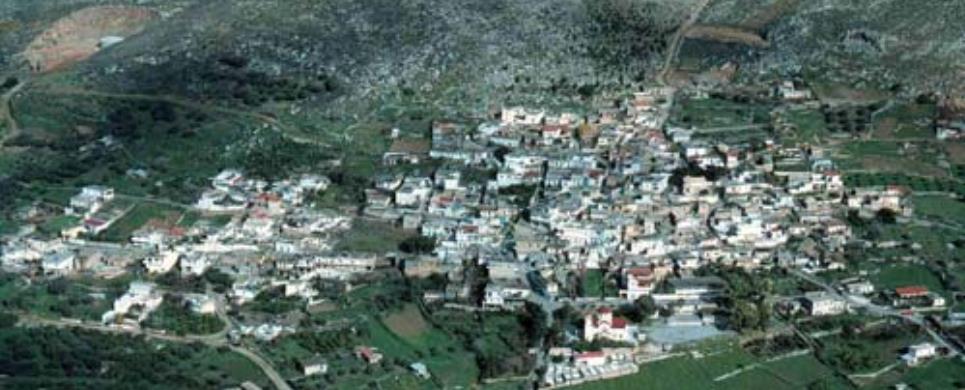
NIPIDITOS (Village) ARKALOCHORI
Tel: +30 28910 61204
PACHIA AMMOS (Village) IERAPETRA
Tel: +30 28420 93272
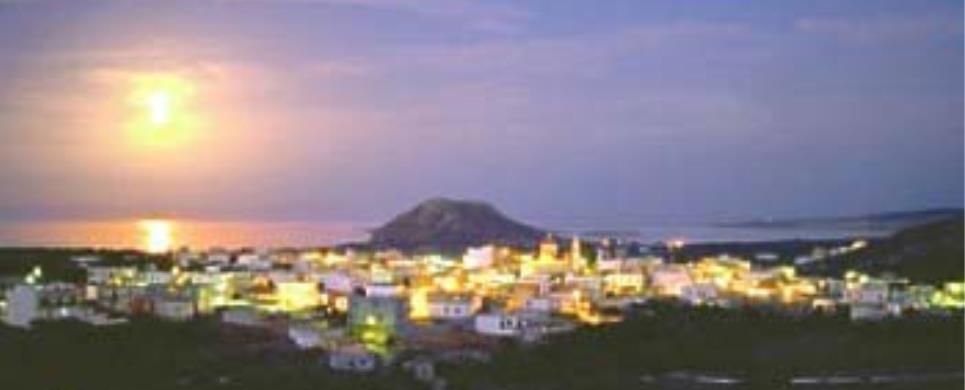
PALEKASTRO (Small town) ITANOS
Palekastro is situated at the most eastern part of Crete,
about 19km away from Sitia
and 8km away from the famous palmforest Vai.
It is the biggest village of all the area of Sitia, with about 1700 permanent
residents.
It is convieniently located and gives access to the natural, historical
and archeological interest of the area. The semi-tropical climate offers mild,
sunny winters and exotic warm summers which are never too hot because they are
moderated by a cooling summer breeze called Meltemii. A unique climatic condition,
that powered the traders in ancient times. There are many kilometers of beautiful
seashores to discover with the famous blue water only the mediteranian can provide.
All of which compose an unparalleled peaceful landscape. This is an ideal place
for quiet and unforgettable holidays.
PALEOCHORA (Small town) CHANIA

PANAGIA (Village) ARKALOCHORI
Tel: +30 28910 61309
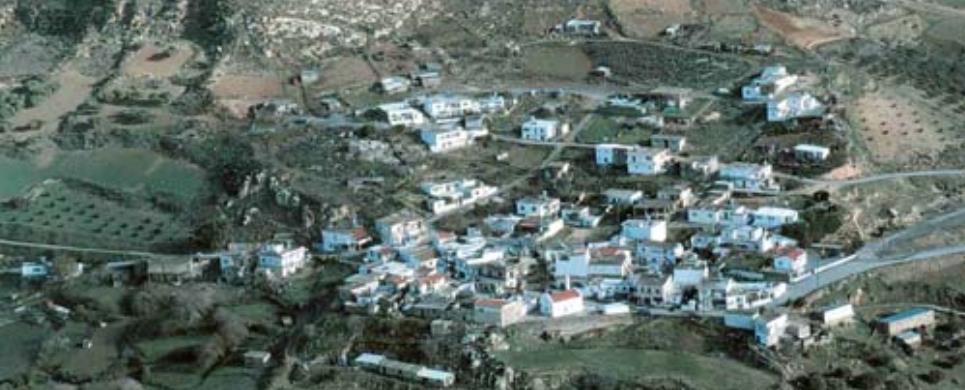
PANORAMA (Village) ARKALOCHORI
Tel: +30 28910 93643
PAPAGIANNADES (Village) LEFKI
Tel: +30 28430 31401
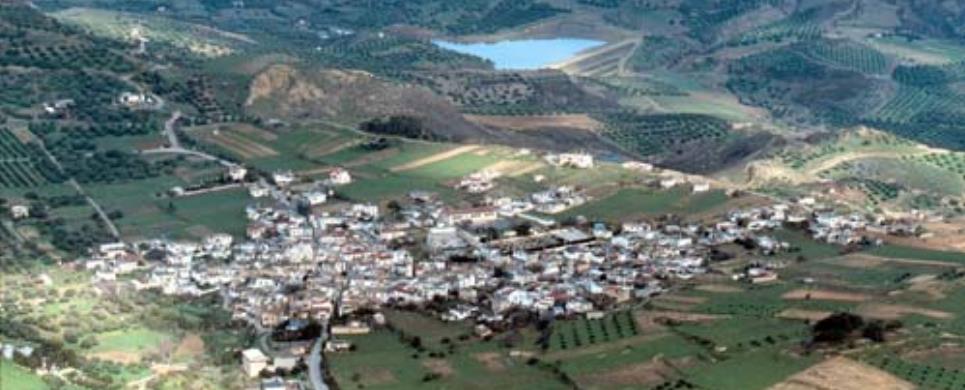
PARTIRA (Village) ARKALOCHORI
Tel: +30 28910 22837
PISKOKEFALO (Village) SITIA
Tel: +30 28430 28812
PISKOPIANO (Village) CHERSONISSOS
At the foot of Mt. Harakas, lies also the colourful Piskopiano. Traditional
settlement with so much beauty inside and outside the settlement. A vivid example
of the richness of local art is the Agricultural museum. Here was founded the
first Bishopric of Hersonissos.
This text (extract) is cited February 2004 from the Municipality
of Chersonissos tourist pamphlet.
PLAKA (Village) VAMOS
On the road from Kalives there is a junction for Almirida. The old
monastery of Panagia Keras is located on a beautiful small beach after Kasteli,
while towards Gavalohori one can see remains of the old public road with its arched
bridge and tollbooth.
Almirida, a small fishing village, evolved into a tourist resort a
few years ago and is an area which demands particular attention from the municipality
of Vamos. At the entrance of the village the 13th division for Byzantine antiquities
of the Archaeological Receipts Fund has uncovered the ruins of an old (6th century)
Christian Basilica separated into three, with mosaics, which are both of excellent
quality and have been exceptionally well preserved. On Finikias hill above the
Basilica (as well as on the small island of Karga) are the remains of a Greek-Roman
town a short distance away from Almirida.
The village of Plaka is built on the slope of a hill with a view of
the Souda bay. It is a community with interesting architectural style, which is
unfortunately changing due to intense building mainly for tourist purposes. The
surrounding environment has maintained its character well and is ideal for walks
either inland or along the coast. Plaka retains its traditional identity, which
must be protected through checks on new buildings in order to prevent the alteration
of the traditional architectural style. Every summer Cretan music festivals take
place in Plaka, the "Plakiana", in honour of Michael Papadakis, from Plaka, a
fine lyra player of recent years.
PRINA (Village) AGIOS NIKOLAOS
RODIA (Small town) GAZI
Tel: +30 2810 841221
The historic settlement of Rodia lays on the steep slope overlooking
Heraklion bay and is
recently booming into a residential center of high quality dwellings. Rodia is
16km away from Heraklion and owes its name to the old church of Virgin Mary's
Annunciation. The steep slopes compose landscapes of exquisite beauty especially
on the coastline and at the foot of the Valley and the gorge that starts from
the bay of Palaiokastro
and ends at the NW of Rodia settlement. Visitors are amazed by the wonderful route
and the 240m altitude overlooking the port of Heraklion, Ammoudara's
bay and the verdant scenery.
ROUSSA EKLISSIA (Village) SITIA
Tel: +30 28430 25705
SELLIA (Village) VAMOS
The community of Pano and
Kato Selia is built on the slope of a hill and surrounded by greenery. It
boasts interesting examples of folk architecture, like the older village
of Souri, with its neoclassical church of Agios Ioannis Theologos.
The coast with the steep cliffs and the wide variety of self-growing
plants near Likotinara is an area of interest and is included with the surrounding
area in the European Community Directive, Natura 2000. Kefalas
and the nearby communities of Selia and Xerosterni
surround a big formation (Dolinis), Roupakia
or Orpakia, an area rich in woody plants, old agricultural facilities (roads,
stone farm houses, wells and other facilities), flora and fauna.
Through the environmental educational programmes this area of natural beauty
will develop and prosper.
SKALETA (Settlement) RETHYMNO
Skaleta, a picturesque and historical settlement, stretches on the
shores of the Cretan Sea
about 12 kilometres east of the town
of Rethymno and 67 km west of Heraklion.
The harbour, which was in use during the second Byzantine period,
the churches of Zoodochou Pighis (live-giving spring) and of St. Nicholas, as
well as archaeological finds in the environment testify the existence of a period
that has been forgotten during the course of the centuries.
Skaleta’s large, sandy beach, which is sometimes caressed, at
other times fiercely beaten by the sea, is surrounded by low hills, from the top
of which a spectacular view is offered to the visitor, especially at sunset. This
beach is one of the last hatching places of the caretta-caretta turtle. Also,
the seal monachus-monachus, which until recently was in danger of extinction,
had found a place of refuge here.
The rocky part of the coastal area boasts a number of caves, the Poseidon
cave being the most important among them, to which access is possible from the
sea only. Inside, bizarre formations of stalactites and stalagmites, reflecting
the whole spectrum of colours, indeed display a "divine picture". At
the entrance of the Poseidon cave, a huge stalgmite in the shape of a lion seems
to watch over the enormous cave. Next to it, a peculiar accumulation of rocks
could have been the "gate of the nymphs", under which the mermaids prepared
themselves before they entered the cave of the great god of the seas.
The historical and mythological background of the village of Skaleta
as well as the beauty of the landscape make this resort particularly attractive
to the visitor who wishes to pass agreeable holidays on this island.
Luxurious hotel units, travel agencies, which offer organized excursions
to all parts of the island, trips around the village and its vicinity on a picturesque
train, car and motorbike rentals, jeweler's and souvenir shops, super-markets,
tavernas and cafes, all these give evidence of the development and the infra-structure
achieved in this area in the field of tourism.
In 1997, the blue flag for clean beaches and sea water was awarded
to Skaleta, which proves that the area is clean and free of pollution.
Picturesque villages in the vicinity such as Prinos,
Episkopi, Magnisia, and Stavromenos
as well as the monastery
of Arsani invite the visitor for walks and give him the opportunity to get
to know the locals.
This text is cited February 2004 from the Scaleta
Cultural Society tourist pamphlet.

SKINIAS (Village) ARKALOCHORI
Tel: +30 28910 91444
Receive our daily Newsletter with all the latest updates on the Greek Travel industry.
Subscribe now!